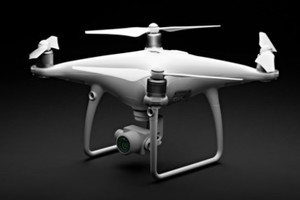
No more waiting for the government to fix that giant pothole. Soon, robots will automatically detect and repair city problems.
ith today’s advanced drone technology, unmanned aircraft can do all kinds of stuff: They can make art, help preserve Peru’s historic sites, and even serve sushi.
Drone making art
Drones help preserve Peru’s historic sites
Sushi delivered by drone
Now engineers in England want to give drones an even bigger task: Fix an entire city. The University of Leeds recently won 4.2 million pound grant (about $6.5 million USD) from the U.K.’s Engineering and Physical Sciences Research Council to create a national infrastructure for so-called “self-repairing cities,” where small robots will identify and repair everything from potholes to streetlights to utility pipes.
The team, led by civil engineer Phil Purnell and including researchers from University College London and the Universities of Birmingham and Southampton, is currently working on three drone designs. One set of robots will be responsible for “perch and repair,” meaning they will perch, like birds, on tall structures and make small repairs to things like streetlights. The “perceive and patch” robots will not only automatically inspect, diagnose, and repair potholes in the road, but will also prevent future ones from forming. And “fire and forget” drones will monitor and repair utility pipes as needed.
The advantage? Using drones means that problems can be detected and fixed early on, so the city won’t have to perform large and disruptive repairs down the line. “Most of what we’re proposing is for the drones to do very simple and mundane tasks,” Purnell says. “When you look at major infrastructure failures—things like potholes or failures in pipe lines—they’re often caused by very small, millimeter-scale defects. And if those were caught early by an automated system, then the larger failures and inconveniences wouldn’t occur.”

Soon, drones will detect and fix infrastructure problems before they get out of hand.(Nasruleffendy/Shutterstock.com)
As the researchers expected, not everyone is excited about the potential of drones. “If you look at the British press, some of the comments you can see are, ‘Thanks very much for taking our jobs,’ and that’s a valid point of view,” says Purnell. “We have a large workforce in the infrastructure-maintenance industry, and we should look at what will be the effect of work patterns, distribution of wealth and society, equality of access to the infrastructure. This is something we feel very strongly about.”
That’s why the team also includes social scientists, economists, and geographers to help track the social, environmental, political, and economic impacts of the new technology. Purnell also emphasized that the purpose isn’t to replace humans, but to have drones do the dirty—and sometimes dangerous—work, freeing up humans to do more the more intellectually stimulating tasks in which they can gain skills to work across industries.
The bigger goal is to test how automated systems can work with humans to make infrastructure more efficient. To meet those goals, Purnell says the team is taking a lesson from nature and using what’s called swarm intelligence. “We’re looking at biological studies and saying,‘Well, [when] we have large numbers of relatively cheap and stupid dronesacting in unison, can we access emerging behavior that will allow us to do things with centralized control?’”
If Purnell and his colleagues’ project goes as planned, it’s a start to a real futuristic city. And though a full-functioning city of drones—where, as one artist described to CityLab, they will be “as ubiquitous as pigeons”—is still decades away, Purnell says his team will be ready to put their robots to the test within the next year.
